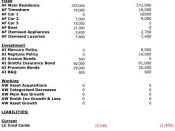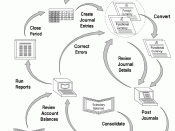The accounting cycle refers to the process by which companies produce their financial statements for a specific period of time. It is called a cycle because the steps are repeated each reporting period. The organization at which I am employed completes its accounting cycle monthly. The organization is a privately owned nursing facility licensed and incorporated in the state of Virginia that has been in business since 1966. An explanation of the overall accounting cycle at the organization including a description of the people, processes, and systems that are integral to the cycle will follow.
The organization currently employs 130 employees in a departmentalized system. Each department is supervised by a department director who is responsible for the communication and documentation to support internal and external transactions that occur in his or her department. For example, the housekeeping director orders all of the cleaning supplies for the facility and sends the purchase orders he completes for the supplies to the accounting office upon delivery of the goods.
The accounting office is part of the administration department and includes one full-time employee who performs the duties pertaining to accounts payable and one full-time employee who performs the duties pertaining to accounts receivables. The payroll, which is performed bi-weekly, is also part of the accounts receivable employee's job responsibilities. The administrator/owner and I oversee the accounting office functions as well as performing specific aspects of the accounting cycle on a monthly basis. The administrator/owner often works from home and I am not actually located in the accounting office on a full-time basis because I also oversee the day-to-day operations of the whole facility.
Many different transactions occur throughout the organization. However, not all transactions are recorded as part of the accounting cycle. Kieso, Weygandt, & Warfield (2004) explain that "the first step...


